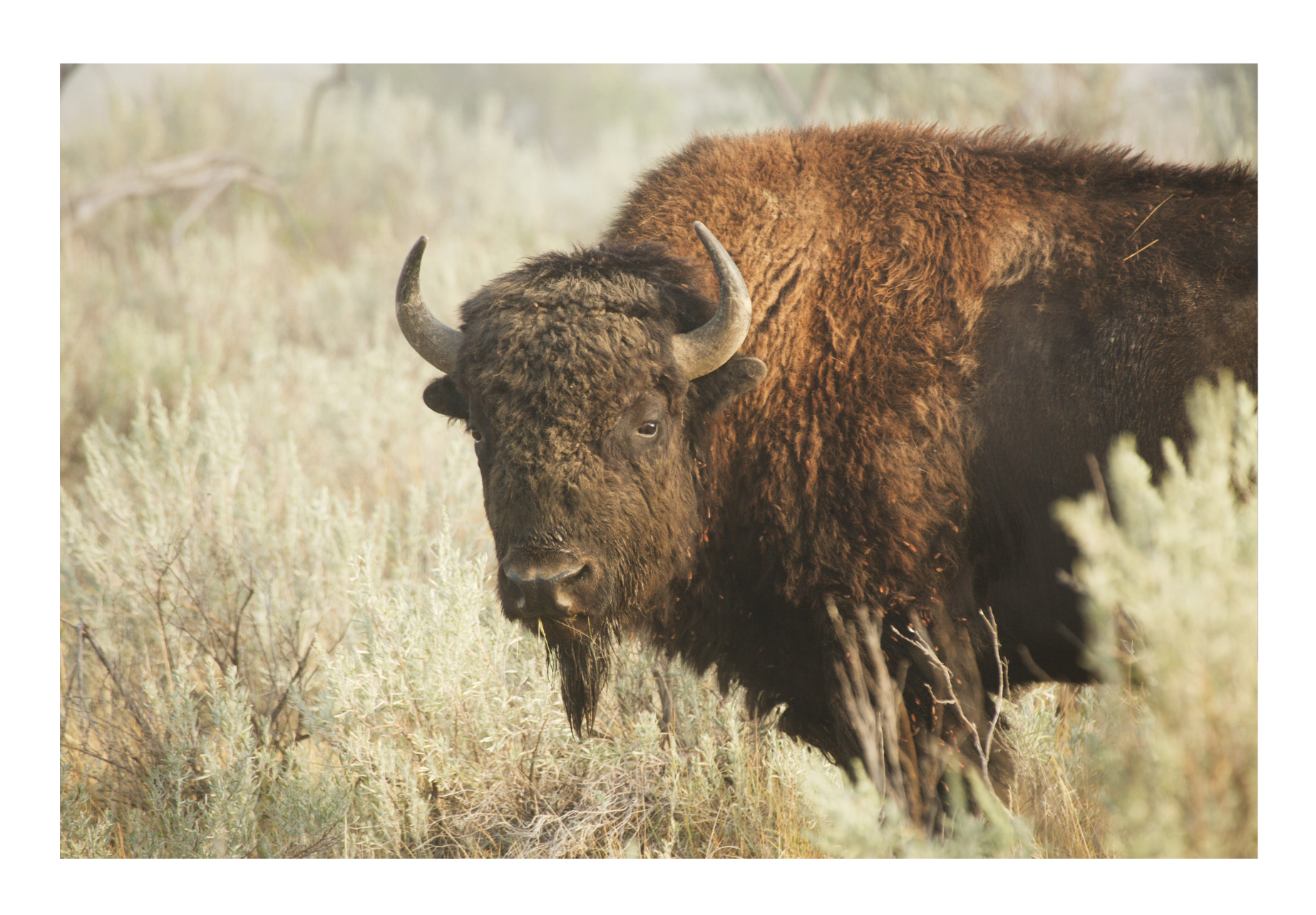September 14, 2023
By Michael Collins, Teravana
Some things are difficult to extinguish, no matter how hard we try. People and forests need redwoods in the same way our prairies and grasslands need bison. American bison used to dominate the prairies and plains of North America, just as redwoods and old-growth forests used to cover much of the Northern Hemisphere.
According to the National Park Service, 30 to 60 million bison roamed North America before the mid-1800s. It is a struggle to imagine, or accept, that by the early 1880s, there were just about no bison left. Similarly, 95% of original redwood forests have been obliterated since logging began in the 1850s.
One of the only threads that has lasted from then until now, when looking at the near tragedy of American bison and coast redwoods, is their ecological importance, first recognized by Native Americans.
Bison were the main source of livelihood for Native Americans of the Great Plains and further west, so much so that many Native American nations are now referred to as “bison-reliant people.” Bison contributed to every aspect of living, including clothing, lodging, blankets, tools, and food. That is just to name a few of the uses; nearly every part of the animal could be used for something. It is important to note that not all bison were seen as a resource; in fact, bison were a part of the culture of Native Americans for 10,000 years (Feir et al., 2022).
Similarly, redwoods were one of the most important resources for Native Americans who lived in the redwood forests of the West Coast. Fallen redwoods and sparingly used cut-down trees were used for the building of homes, furniture, canoes, paddles, and fishing tools. Trees were often used to delineate spiritually significant landmarks and were treated as equals to humans (California State Parks.gov).

But with newcomers, came new ways of thinking. Technology played a powerful role in the quick decline of bison and redwoods.
European influence brought with it horses, making it easier to hunt because horses could carry a hunter and a spear and could get closer to prey. Horses reduced the cost of hunting bison, and the fate of bison was made even worse because both European settlers and Native Americans were now using horses to hunt bison.
Next, came the beginnings of the Union Pacific Railroad. The railway gave access to the herds in the interior of North America. Realizing that bison were so integral to Native American nations, bison were exterminated in places like Northern Montana and Wyoming because the American military saw it as a way to weaken Native American nations. Since Native Americans were so reliant on the bison, slaughtering bison became a strategic way of eliminating tribes (Feir et al., 2022).
Like the railroad’s effect on bison, an invention called the Dolbeer Donkey engine increased the amount of trees able to be cut. The early felling of trees was usually done with axes, and logs were tediously transported on creek beds with logs laid across, or by floating logs on water. But John Dolbeer of Eureka, California invented the donkey engine in the 1880s and revolutionized logging, making it possible to haul huge logs that would otherwise require another form of animal power for transport (Wilma, 2003).
Today, groups like Teravana and Archangel Ancient Tree Archive are fighting to bring back endangered redwoods and old-growth forests. Redwoods, like bison, will not go away because they belong here.
Once threatened by extinction, today there are approximately 500,000 bison in America, either in conservation herds or in commercial herds. Without bison, grasses and prairies grow unwieldy, drying out the soil, and preventing healthy plant growth. The urine and manure from the bison provide nutrients for the plant cover, and their heavy hoofs help the earth capture moisture. All of these benefits contribute to a healthy ecosystem (Bison Central.com).
Like many other trees, the more we learn about redwoods, the more it makes sense to find places to plant and nurture them. Otis Parrish of the Kashaya Pomo tribe of what is now Northern California remembers when he was a child seeing the redwoods being wiped out of what is now Teravana. Today he is still connected to the land. Talking about the reforestation work at Teravana, Otis says, “Now when I looked from the same spot, I see more young redwoods coming up, and it made me happy.”
REFERENCES
“Bison is Healthy for You and the Environment.” National Bison Associaton. https://bisoncentral.com/
Feir, Donn. L, et al. “The Slaughter of the Bison and Reversal of Fortune on the Great Plains.” 2022. National Bureau of Economic Research.
https://www.nber.org/system/files/working_papers/w30368/w30368.pdf
“Section II: Human History of the Coast Redwoods.” Redwood Ed: A Guide to the Coast Redwoods for Learners and Teachers. California State Parks.gov.
https://www.parks.ca.gov/pages/735/files/03seciihumanhistorych1to3.pdf
Wilma, David. “John Dolbeer invents the donkey engine and revolutionizes logging in August 1881.” 2003. HistoryLink.org Essay 5331. https://www.historylink.org/File/5331